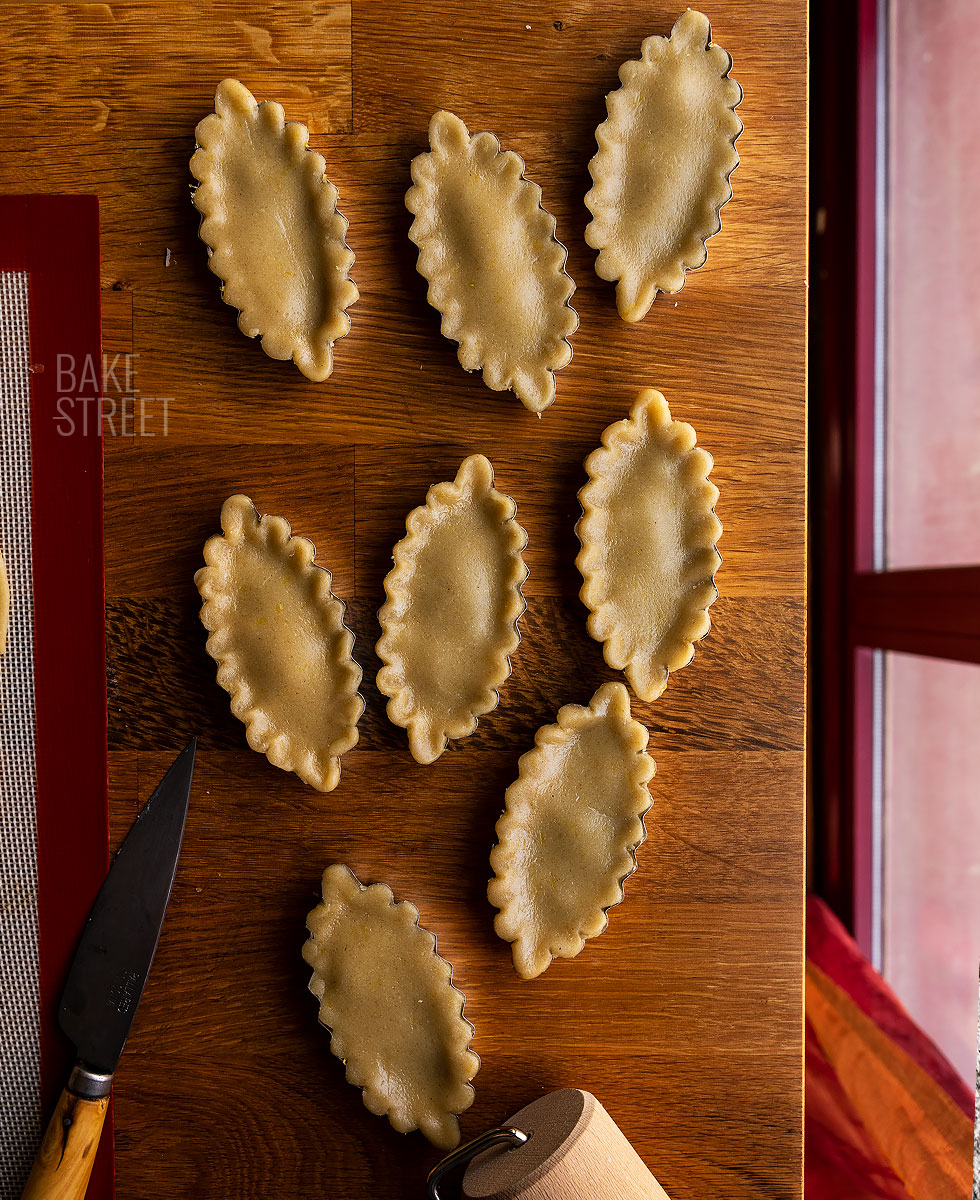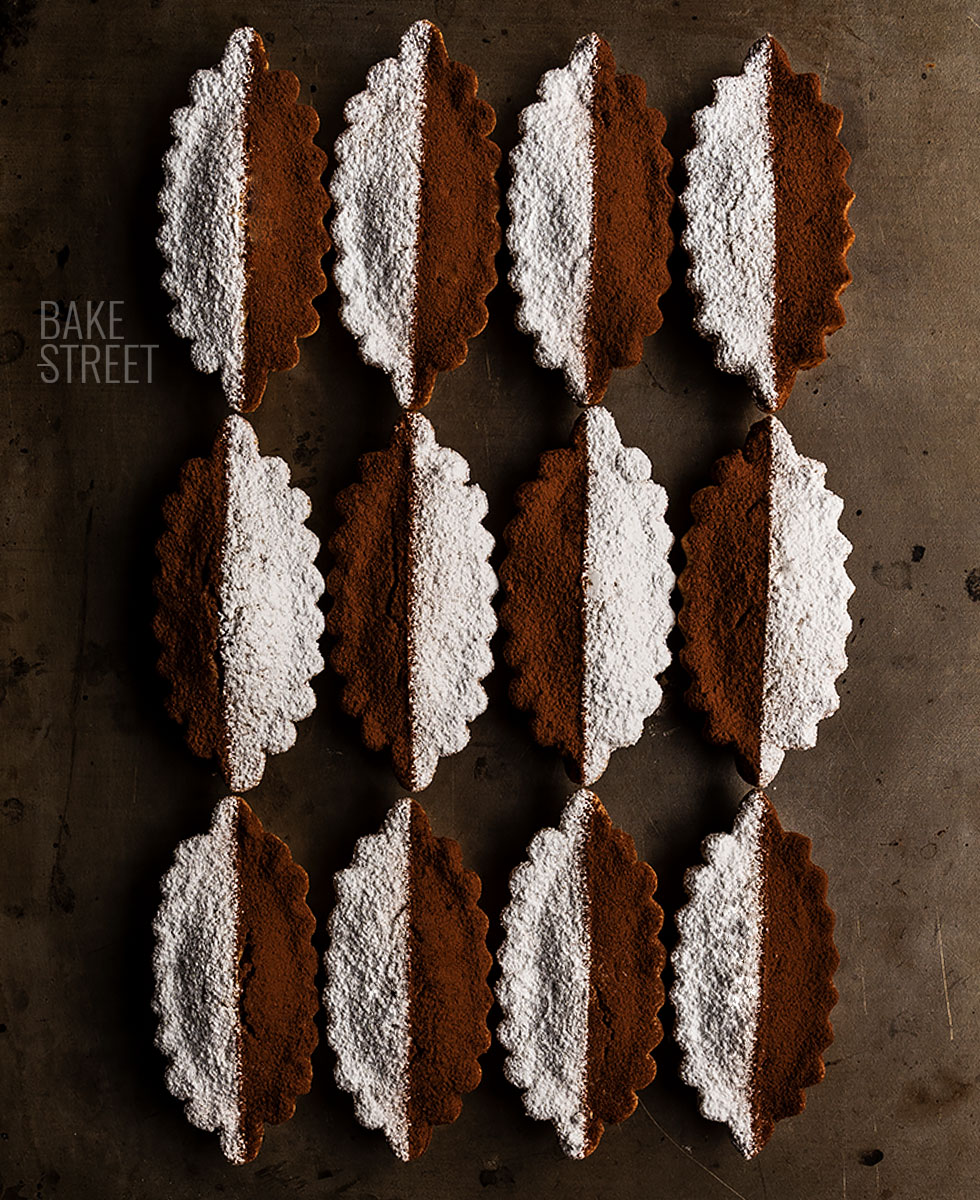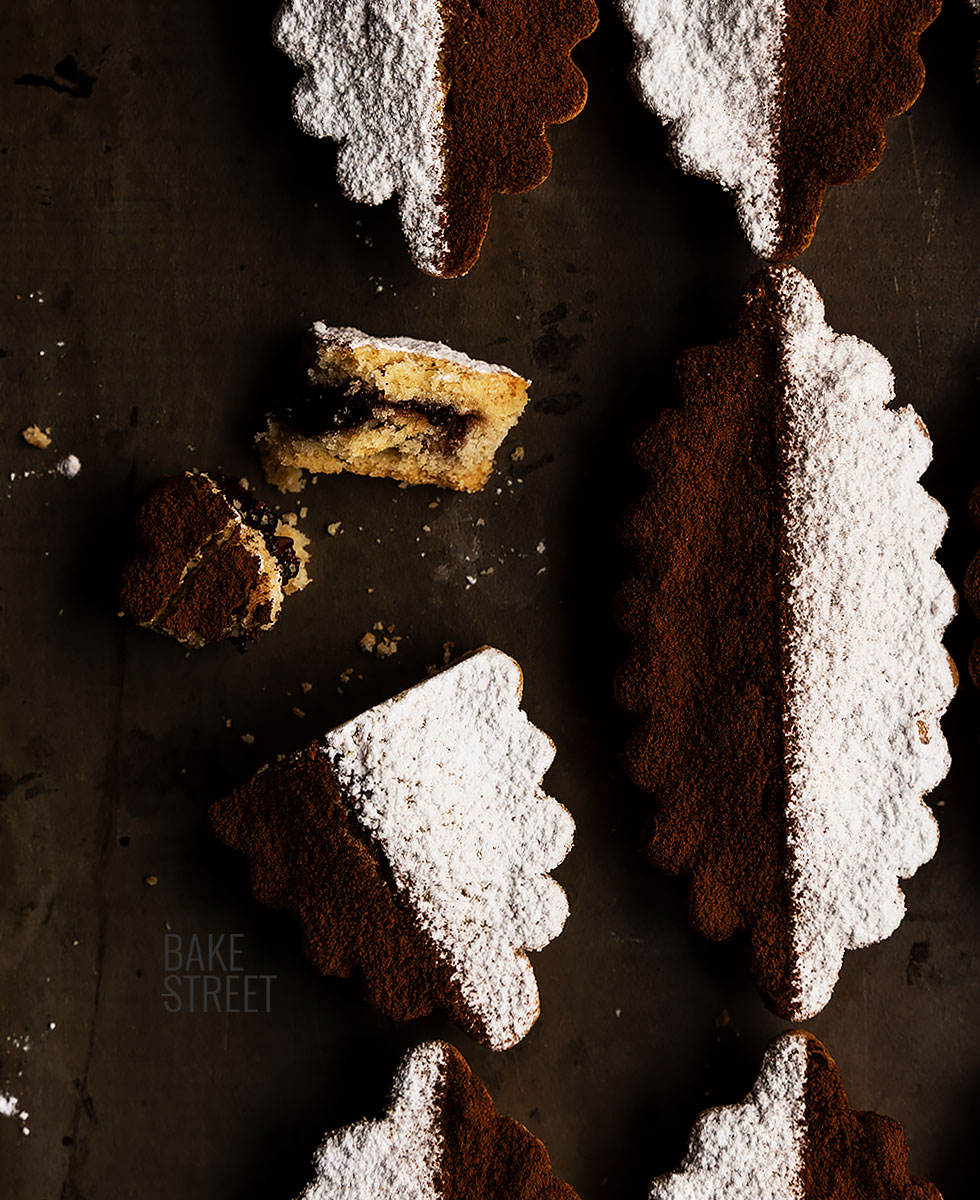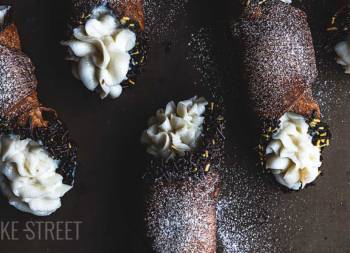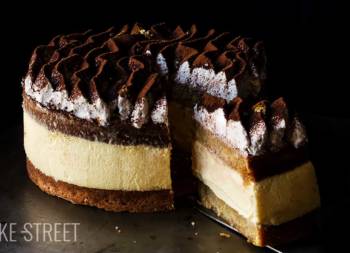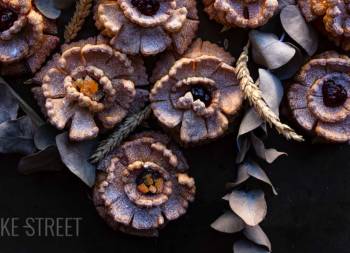
Bocconotti Abruzzesi, Italian pastries
I have been keeping this recipe for several months and I couldn’t let any more time go by without making it or posting it. It is a recipe that you are going to love because it is very easy to make and the result is sensational, both in texture and flavour. Today we are going to see how to make Bocconotti Abruzzesi, Italian pastries that you are going to love.
First of all, I would like to tell you that the format of this pastry is a little different. It is usually made in small curly moulds (bocconotti mould) in an individual format. I looked for them, but I didn’t find what I wanted, so I decided to use these long curly moulds that you have already seen me use on other occasions (for the Bakewell tarts and Carbayones from Oviedo).
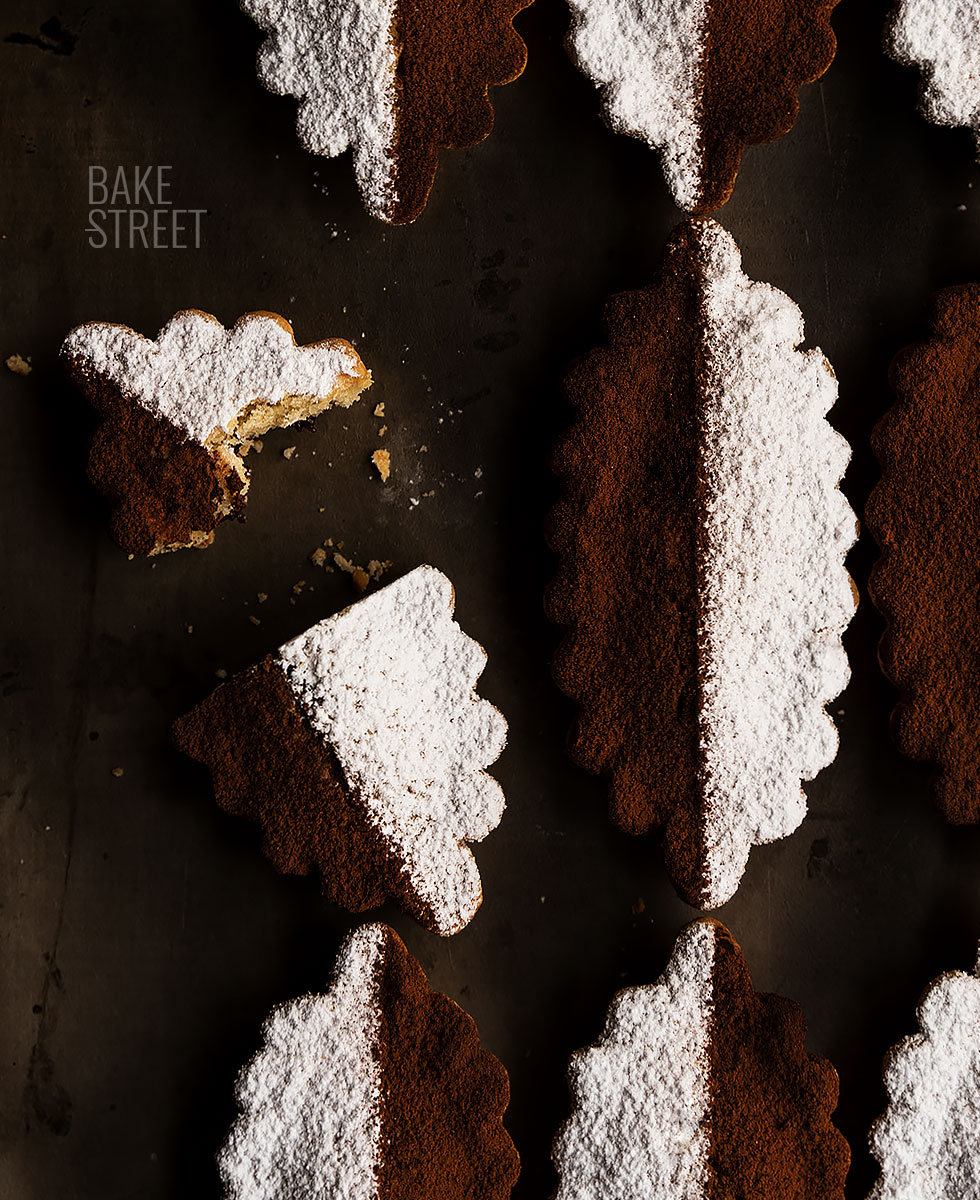
Bocconotti Abruzzesi origin.
This is an Italian sweet typical of the tradition of Abruzzo, Molisana, Salentine, Lucana, Puglia and Calabrese which differ from each other and are characterised by a filling which varies according to the area where they are made.
The origin of their name comes from a legend set in the early 18th century, when Abruzzo began to import coffee and cocoa for the production of chocolate, two key ingredients in the preparation of the bocconotti filling.
It is said that a maid from Castel Frentano, a village in the province of Chieti in Abruzzo, to pay homage to her master, who was avid for the two new exotic products, created a shortcrust pastry similar in shape to a coffee cup containing a filling of coffee and melted chocolate.
During the first baking, she realised that the filling was too liquid, so he decided to thicken it by adding chopped almonds and egg yolk, finally covering the shortcrust pastry “cup” with a “lid” of pastry. At the end of baking, she sprinkled the cake with icing sugar. Enraptured by her creation, the owner asked the maid what she called this sweet and she replied ‘bocconotto‘ as it could be eaten in one bite.
Originally, these cakes were reserved for the sweet menu of the wealthier social classes.
The size of these small cakes remained the same until the middle of the 20th century, when they began to increase until they reached the current 6-7 cm in diameter and 2-3 cm in height.
Since then, following the legend, a coffee bean is usually added to the filling instead of liquid coffee.
Bocconotti Abruzzesi format.
The dough is made with flour, sugar, eggs, oil, liqueur and lemon zest. The more traditional filling consists of jam, almonds and chocolate. What was missing at the time was the recipe, known from the ‘newsletters’ jealously guarded by all the families of Castel Frentano.
The peculiarity of this pastry is the consistency of the shortcrust pastry, which, as in all Abruzzo desserts, does not contain butter. Extra virgin olive oil is once again the undisputed protagonist in the art of Abruzzo confectionery and is not excluded in the famous bocconotti.
The dough is of a soft consistency, easy to work, giving rise to a ‘shortcrust pastry’ that achieves a perfect balance with the filling of the bocconotti, a rare cultural heritage that is difficult to recreate unless all the necessary precautions are taken. The particularity of the procedure requires working the dough by adding the flour ‘by eye’. There is a video that conveys this process very well, ‘The Art of Bocconotto’.
Scrucchiata.
One of the most important ingredients in the production of what can be considered the true traditional bocconotti is the famous scrucchiata .
This grape jam, typical of Abruzzo, is made from Montepulciano grapes, i.e. wine-making grapes, the bunches of which are selected when ripe to ensure their sweetness.
Scrucchiata is made without adding sugar. It has a dark, intense purplish colour and its flavour is balanced by a touch of sweetness and a bitter undertone that make it very special.
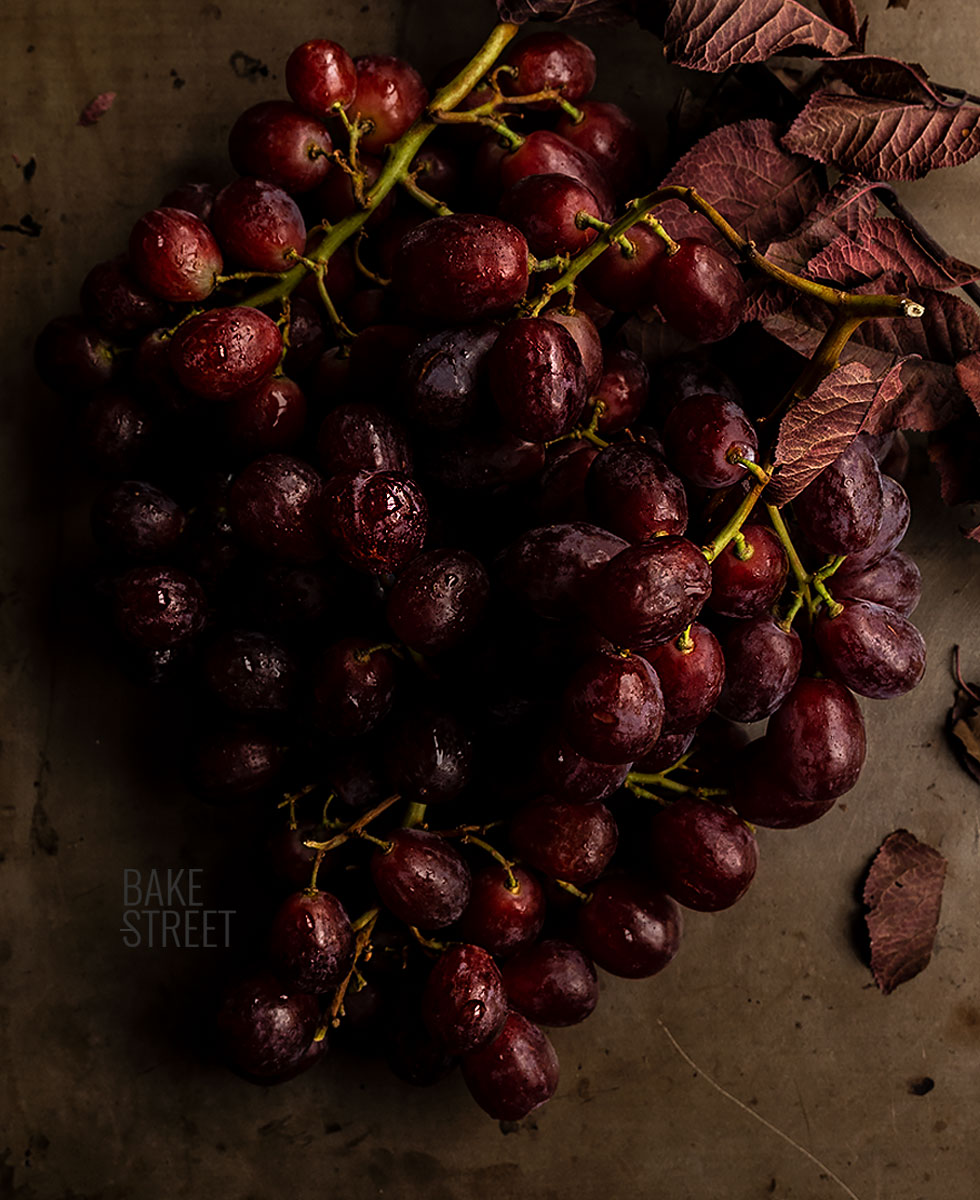
The traditional process of making this jam follows rules that have been handed down from generation to generation. It is a long and patient procedure that begins with the careful washing of the grapes.
The grapes are selected, removing the dry or damaged ones, and then crushed. They are squeezed between the fingers, with a skilful and expert movement that separates the skin from the flesh.
The grape skins and flesh are placed in two different pots. During cooking, the seeds detach themselves from the flesh. After straining the flesh, it is transferred to the pot with the skins and cooking is continued until a creamy/denser mixture is obtained.
The jam is distributed into jars, placed in the oven previously heated to 100 degrees and, once the jars are placed in the oven, it is turned off. They are left in the hot oven until completely cooled. After this process, the jam is ready to eat.
A pleasure for the senses.
The result of this exquisite bite is something that will surprise you and leave you speechless…. These small cakes with a soft and light texture (thanks to the use of olive oil), but with a crunchy, very fragrant, aromatic and citric flavor, together with a soft, silky and crunchy filling, will not leave any palate indifferent.
I never imagined that the combination of grape jam with dark chocolate, almonds and cinnamon could be so absolutely extraordinary. The dough is something that should not be overlooked, its thickness and baking point will determine how good the final result will be.
Traditionally, these Bocconotti Abruzzesi are just sprinkled with icing sugar. But those of you who know me, know that I have a hard time holding back. So, if you will allow me and forgive me for the more traditional ones, I have decided to decorate the surface with icing sugar and unsweetened cocoa powder. Wonderful, I promise.
Recipe Bocconotti Abruzzesi
Ingredients for 15-16 pieces
Recipe adapted by Blog Giallo Zafferano
DOUGH:
- 360 g bread flour (originally is used flour 00)
- 114 g olive oil
- 150 g sugar
- 1 large egg
- 1 large egg yolk
- 5 ml Amaro (herbs liquor) or another liquor like rum, for example
- 1 tsp vanilla extract
- one lemon zest
- pinch of salt
FILLING:
- 285 g homemade grape jam
- 50 g chocolate 70%
- 50 g chopped almonds, roasted
- 1 tsp cinnamon powder
FOR DECORATING:
- icing sugar
- unsweetened cocoa powder
MATERIAL:
- kneader/stand mixer (optional)
- tarts or bocconotti moulds
- adjustable roller
- silpat or teflon
- tray
- grater
- sharp knife
Instructions
Make the dough for the pastries.
- In the bowl of the KitchenAid, add the eggs, sugar, oil, liqueur and vanilla.
- Mix with the whisk on medium speed for a couple of minutes.
- Meanwhile, grate the lemon and add it to the flour. Add a little salt and mix lightly.
- Start to add the flour, little by little and mixing, using the flat beater, for a few seconds. Just enough to integrate all the ingredients well.
- Transfer the dough to a work surface and knead for 1 minute to achieve a uniform dough.
- Divide the dough into 2 equal parts.
- Place the dough on a silpat and roll out with an adjustable rolling pin to a thickness of 2 mm.
- Cover with plastic film and place on a perforated tray.
- Roll out the other dough, this time I did it on a teflon sheet. Cover with plastic film and place on top of the other dough.
- Refrigerate for 2-3 hours or store in the freezer for 45 minutes.
Line the moulds with the dough.
- Place the mould on top of the dough and cut the dough to a size slightly larger than the mould.
- Place the dough on the mould, previously greased with butter, mine are 10 cm long, and carefully adjust it to the mould.
- Run a rolling pin over the surface, this step will help us to cut the dough and achieve a cleaner and more perfect finish.
- Remove the excess dough by sliding the dough downwards.
- Repeat the same process with the rest of the moulds.
- The dough scraps can be rolled out again to fill more tartlets.
- Refrigerate the moulds while preparing the filling.
Cut the dough that covers the pastries.
- With the help of the mould you are going to use, cut out the cake toppers. Try to fill and cut the same number of pieces.
- Once you have marked all the dough with the covers, put it in the freezer for 30 minutes. The colder the dough is, the better we will be able to handle it.
Prepare grape chocolate filling.
- Chop the dark chocolate and set aside.
- In a bowl, add the grape jam and the chopped chocolate together with the almonds and cinnamon. Mix until homogenised.
Fill the bocconotti and cover them.
- Fill the moulds with the grape jam and chocolate mixture. Spread the filling well to obtain a smooth surface.
- Remove the marked dough from the freezer. With the help of a knife, remove the dough from the silpat. To do this, slide it underneath the pastry.
- Place the dough on the mould and seal the ends by pressing gently.
- Repeat the same process with all the moulds.
- Refrigerate for 1 hour.

Bake.
- Preheat oven to 355ºF/180ºC.
- Place the molds on a perforated tray lined with Teflon, to prevent any molds from overflowing to the floor of the oven, and place them at half height.
- Bake for 20 minutes. We will observe that they acquire a nice golden color on the surface.
- Remove from the oven and place the molds on a rack. Allow to cool completely before removing from the mold.
- They can be easily removed from the mold by turning the mold over.
Decorate.
- I used icing sugar and cocoa powder to decorate the outside, but you can decorate them with just icing sugar if you wish.
- Place a scraper on the pastry, lengthways, and sprinkle half of it with icing sugar.
- Switch the scraper to the other side and sprinkle the other half with cocoa powder.
- Serve.

Notes
- We should not knead/work the base dough too much to avoid developing gluten. This would cause the dough to swell a lot during baking. For that reason we use the fraisage technique to amalgamate it.
- Liqueur in the dough can be adjusted to your taste or to the liqueurs you have at home. If you don't want to use liqueur, you can omit it directly.
- This dough must always be handled very cold to avoid it sticking to the work surface or our hands. In my case, I choose to keep it in the freezer for a few minutes, so that it will last longer, firm and easy to handle.
- I used 10 cm long curly molds.
- In my case I used homemade grape jam. But if you prefer, you can use another variety of jam such as cherry (I made half with grape and half with cherry, I can't say which of the two is better), strawberry, raspberry, figs...
- My jam is made with sugar, but you can choose to make it without sugar as per the traditional recipe.
- I advise you to use good quality chocolate and almonds, as the result will not be the same.
- In case the cakes do not unmould well, there is a trick that will allow you to unmould them without any problems. Once the cakes have cooled completely, put them in the freezer for 60-90 minutes. The change in temperature will cause the dough to contract and the cakes will unmould without any problems. Just insert the tip of a knife into the side of the pastry and it will come out very cleanly.
- They can be kept in an airtight container for 15 days. They won't last that long, I warn you.

From now on, I can't imagine a weekend without a Bocconotti Abruzzesi to accompany my coffee. It is so delicate, aromatic, elegant, refined and addictive that you won't be able to live without it. You would let me know.
It's also the kind of recipe that doesn't require very laborious or complicated processes, so there's no excuse not to make it at home.
I wish you a wonderful weekend!
Big hugs,
Eva
